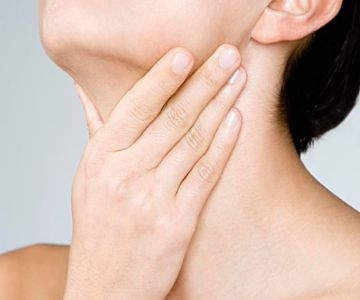What are the causes of hoarseness?
Acute Laryngitis: swelling of the vocal folds that occurs during a common cold, upper respiratory tract viral infection, or from voice strain
Voice Misuse:
• Speaking in noisy situations
• Excessive use
• Telephone use with the handset cradled to the shoulder
• Using inappropriate pitch (too high or too low) when speaking
• Not using amplification when public speaking
Benign Vocal Cord Lesions: Prolonged hoarseness can occur when you use your voice too much, or too loudly for extended periods of time, can lead to nodules, polyps, and cysts
Vocal Hemorrhage: If you experience a sudden loss of voice following a yell or other strenuous vocal use, you may have developed a vocal fold hemorrhage. Vocal fold hemorrhage occurs when one of the blood vessels on the surface of the vocal folds ruptures and the soft tissues fill with blood. It is considered a vocal emergency and should be treated with absolute voice comes up the swallowing tube (esophagus) and irritates the vocal folds.
Laryngopharyngeal Reflux (LPRD): the reflux makes it all the way up through the upper sphincter and into the back of the throat. The structures in the throat are much more sensitive to stomach acid and digestive enzymes.
Smoking: Smoking is the major cause of throat cancer, if smokers become hoarse, they should see an otolaryngologist.
Neurolgical Diseases or Disorders: Hoarseness can also appear in those who have neurological diseases such as Parkinson’s or a stroke, or may be a symptom of spasmodic dysphonia, a rare neurological disorder that usually affects only the voice.
Other Causes: These include allergies, thyroid problems, trauma to the voice box, and occasionally, menstruation. Very serious conditions such as laryngeal cancer can also cause hoarseness, which is why it is important to have chronic hoarseness evaluated promptly by an otolaryngologist.
How is it evaluated?
Otolaryngologists will obtain a thorough history of a patient’s hoarseness and general health. They will then evaluate the voice and do a complete ear, nose, and throat exam. This includes examination of the vocal folds by laryngoscopy. Laryngoscopy may be suggested by the otolaryngologist at any time during an evaluation for hoarseness, but if it persists beyond three weeks it should be evaluated and that evaluation should occur within a maximum of 3 months. The evaluation should be immediate if there is concern about a serious underlying cause is suspected.
When you have to see your doctor?
- If hoarseness lasts longer than three weeks, especially if you smoke
- If you have a cold or flu
- If you are coughing up blood
- If you have difficulty swallowing
- If you feel a lump in the neck
- If you observe loss or severe changes in voice lasting longer than a few days.
- If you experience pain when speaking or swallowing
- If difficulty breathing accompanies your voice change
- If your hoarseness interferes with your livelihood
- If you are a vocal performer and unable to perform
How is it treated?
The treatment of hoarseness depends on the cause. Many common causes of hoarseness can be treated simply by resting the voice or modifying how it is used. An otolaryngologist may make some recommendations about voice use behavior, refer the patient to other voice team members, and in some instances recommend surgery if a lesion, such as a polyp, is identified. Not smoking and avoiding secondhand smoke is recommended to all patients. Drinking fluids and taking medications to thin out the mucus may help.
Prevention tip:
- If you smoke, quit.
- Avoid agents that dehydrate the body, such as alcohol and caffeine.
- Avoid secondhand smoke.
- Stay hydrated, drink of plenty of water.
- Humidify your home.
- Watch your diet, avoid spicy foods
- Try not to use your voice too long or too loudly.
- Use a microphone if possible in situations where you need to project your voice.
- Seek professional voice training.
- Avoid speaking or singing when your voice is injured.

